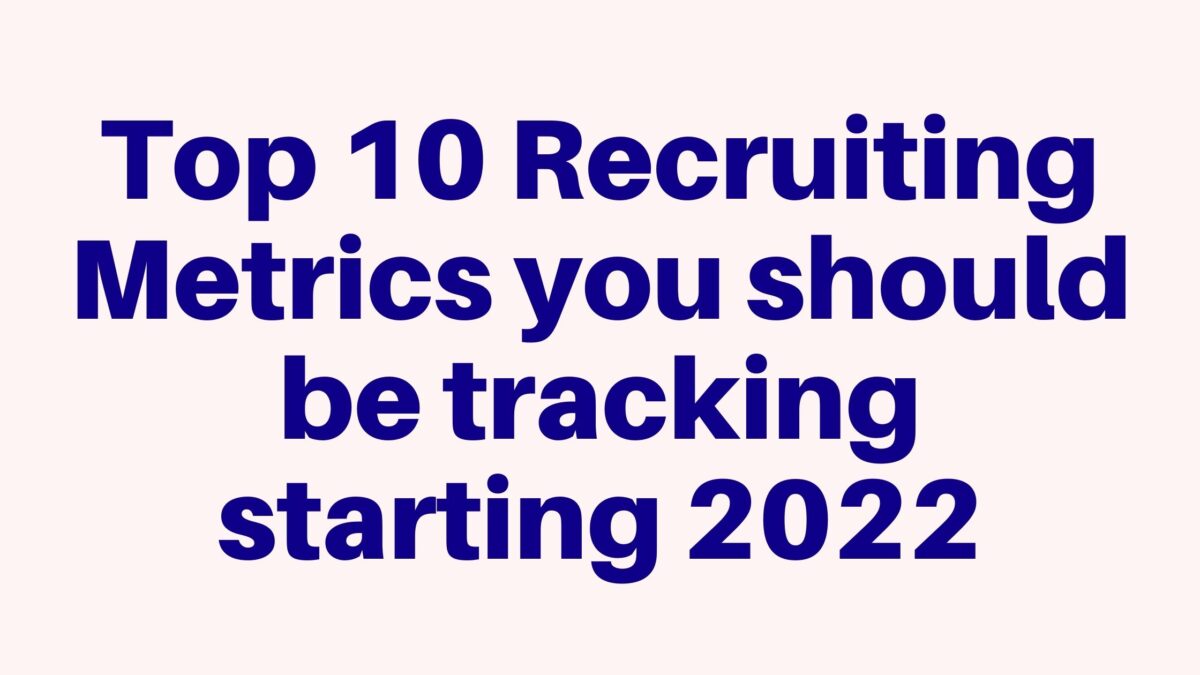With 2022 approaching fast, the new year is a perfect time to focus on ways to optimize your recruitment processes in order to accelerate the growth you have achieved this year.
What better way to do that than with recruiting metrics?
Recruiting metrics (also referred to as ‘hiring metrics’ or ‘staffing metrics’) are a set of values or data points that can measure team performance across the recruitment funnel, from candidate sourcing and interviewing to offer acceptance rate and candidate/client satisfaction.
Recruiting metrics are a crucial part of any data-driven recruitment strategy.
At the beginning of your data-driven decision-making journey, the number of metrics and data points that you could measure seems endless. When tracking everything seems crucial, it is good to know which metrics can be used to make the most informed recruitment decisions.
Understanding and measuring the right recruitment metrics can have an immense impact on the efficiency and success of your recruitment or talent acquisition team.
We have created a list of the 10 most important recruitment metrics in 2022 that valuable information about your recruitment efficiency, quality of job orders, quality of candidates, candidate engagement, and recruitment success.
1. Time-to-fill
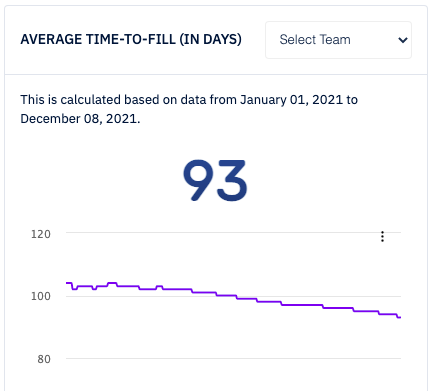
Time-to-fill refers to the amount of time it takes to source and hire a candidate for an open position. Typically, recruiters measure time to fill based on the number of days between advertising an open role and hiring the right candidate.
Time-to-fill helps recruiters better understand how long it can take their team to fill open roles or provide a replacement to the clients.
You can see your current time-to-fill metric along with its comparison to the last year on the Candidate Insight Dashboard on your Spotlight Data screen. You can also compare your current time-to-fill metric with your benchmark year. If your recruitment company fills open positions across different industry verticals, you can also filter the time-to-fill to see industry-specific results.
Want to track the important metrics for your team in 2022? Click here to book a free demo.
2. Time-to-hire
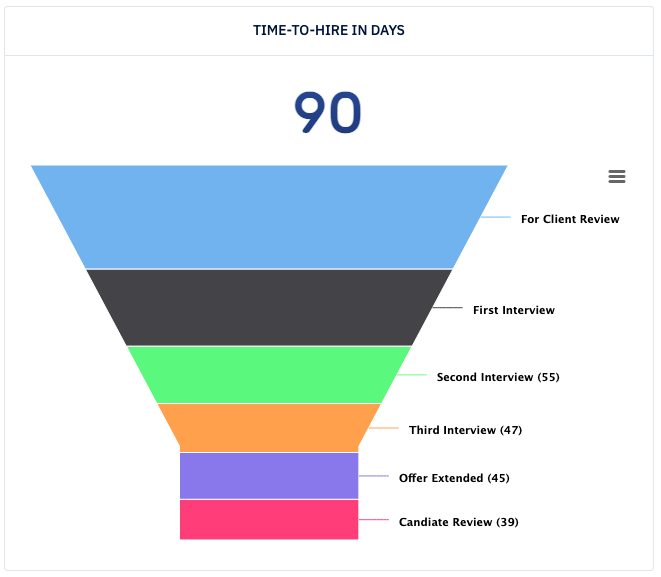
Time-to-hire shows how quickly a candidate moves through the various stages of hiring. Depending on the role type and your and your client’s recruiting process, the time-to-hire can be relatively short or too long.
You can see your current time-to-hire metric along with its comparison to the last year on the Candidate Insight Dashboard on your Spotlight Data screen. You can also compare your current time-to-hire metric with your benchmark year.
Want to track the important metrics for your team in 2022? Click here to book a free demo.
3. Source of hire
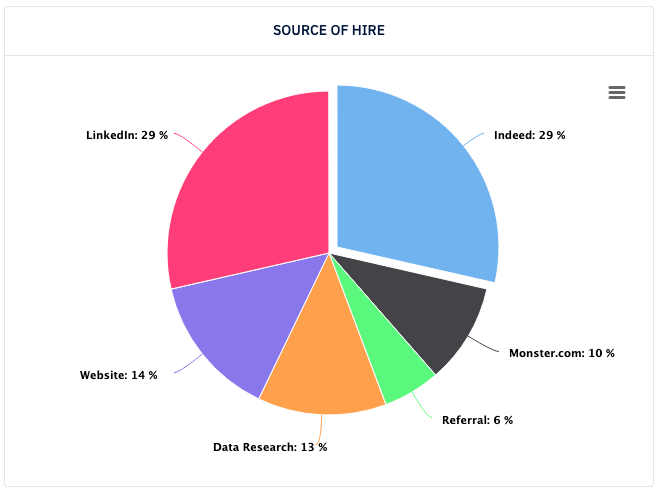
Identifying where your top candidates and applicants are coming from is priceless.
With this metric, you can track which sources and channels are driving the most ROI in attracting job seekers to your open positions.
It helps the recruitment firm to move the recruitment marketing dollars in the right direction.
For example, you can look at Open Searches Insights screen to find the job boards you post open positions to, your social media accounts, and any paid advertising channels you use to determine where candidates come from and which channels are most successful.
Want to track the important metrics for your team in 2022? Click here to book a free demo.
4. Diversity of candidates
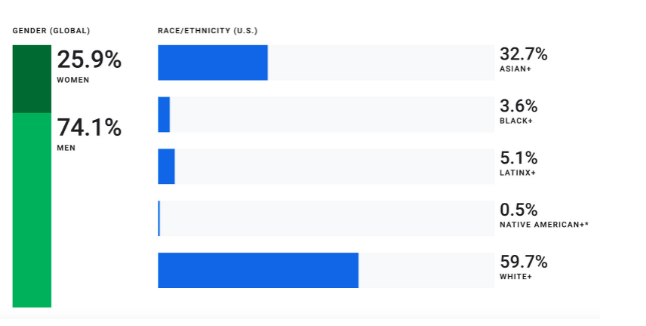
Diversity recruiting is becoming an essential part of any team’s process for sourcing top talent, and yet, teams may not always track this metric in the same way they do top of funnel ones like time to hire.
To ensure you’re driving diversity in your recruiting process, you can look at the Diversity Screen on Spotlight Data.
Want to track the important metrics for your team in 2022? Click here to book a free demo.
5. Quality of hire
While measuring the quality of hire can be subjective, it’s arguably one of the most important metrics to track.
It doesn’t matter how quickly you fill a role, or how much you reduce the cost of hire, bad quality-of-hire indicates that you have the wrong candidate for the wrong role.
Lower quality-of-hire can cost your firm thousands so, ensuring that you are measuring the quality of hire is critical.
You can see the number of times you have provided a replacement for hire within one year on the Insights Dashboard.
Want to track the important metrics for your team in 2022? Click here to book a free demo.
6. Candidates per role
A large part of a recruiter’s role is working to bring exposure to open roles within their organization. But how do you gauge whether job seekers are interested? You measure metrics like applicants per role.
With this metric, you can determine the demand for and interest in an open position based on data like the number of applicants per role or hire.
Conversely, you may want to look at how many job seekers abandon application processes or choose not to apply to a role once they reach a certain stage of consideration.
Want to track the important metrics for your team in 2022? Click here to book a free demo.
7. Cost per hire
Cost per hire is simply the total amount you spent on recruitment annually, divided by the total number of positions you’ve filled.
The costs associated with recruitment differ in every organization, but it’s wise to benchmark the average costs for various roles in your own company.
You can specify the expenses per team member along with other expenses and Spotlight Data provides you with your current Cost-per-hire and Per-Desk-Average value as well.
Want to track the important metrics for your team in 2022? Click here to book a free demo.
8. Offer acceptance rate
This metric lets you compare the number of candidates who accepted an offer versus the number of candidates who received an offer. And this insight can reveal a lot for your recruiting team.
Salary and compensation, benefits programs, flex work, and other factors can impact whether candidates accept or decline an offer of employment.
A low offer acceptance rate is often indicative of issues that weren’t clarified or resolved during the hiring process.
Want to track the important metrics for your team in 2022? Click here to book a free demo.
9. Number of open positions
You can compare the number of open positions your company has to the total number of positions to determine the success of your hiring strategy—and, more specifically, for certain departments or teams.
If you have a high number of roles still open, for instance, this can be indicative of a lack of demand or interest; meanwhile, a lower number of open positions could indicate high demand, especially during periods of rapid growth or expansion.
This metric is also one to keep an eye on if high volume hiring is a frequent concern for your team, or if you need to hire in bulk and want to track how quickly roles are being filled.
With Spotlight Data, you can track the number of open positions and the average fill rate as well.
Want to track the important metrics for your team in 2022? Click here to book a free demo.
10. Application completion rate
Tracking this metric alongside others like applicants per role can help you understand how streamlined your hiring process truly is.
In some cases, organizations may require candidates to go through an elaborate application process that can take too much time and create frustration for job seekers.
A drop in application completion rate can indicate problems with this process and give you insight into where you can streamline it for candidates.
Want to track the important metrics for your team in 2022? Click here to book a free demo.
